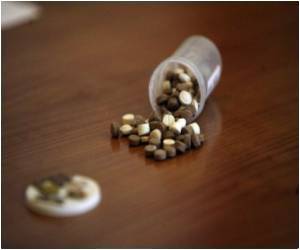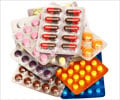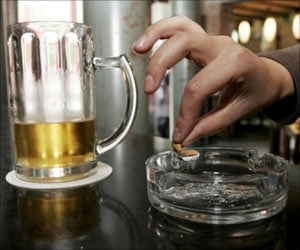New, synthetic drugs of which the ingredients and effects on users are unknown are being detected at a rate of about one a week in Europe, warns the continent's drug agency.

For the period 2005-2011, the total had been 164.
"More than ever before, young people are exposed to a plethora of powders and pills," the agency said in a statement.
"Data from emergency rooms, toxicology reports and drug treatment centres indicate that the associated risks are not always well known by the users."
The new psychoactive substances are sold on the illegal drug market but also sometimes on the Internet.
A study in January found nearly 700 online stores selling so-called "legal highs", which the report warned often contained "obscure" chemicals or mixtures of chemicals, and have caused several acute medical emergencies and deaths.
Advertisement
"Consumers of these products are likely to be both unaware of what they are consuming and ignorant of the health and legal implications."
Advertisement
-- Greece, Romania see rise in drug-related HIV --
The agency also reported a decline in overall cocaine and heroin use, but noted a worrying rise in HIV infection among heroin-injectors in Greece and Romania.
In Greece, the rate has increased to 241 infections in 2011 from between nine and 19 per year up to 2010, and in Romania to 114 cases last year from between one and six per year before that.
This was despite a Europe-wide decline in intravenous drug use and new HIV infections.
The impacts of the world economic crisis, particularly harsh in these two countries, may be to blame -- fanning risky drug behaviour and leaving treatment centres short of clean needles or drug substitutes, said the EMCDDA.
"There is a continuous need to keep public health and sufficient preventive services on the agenda in these challenging economic times," said EMCDDA management board chairman Joao Goulao.
Heroin remains responsible for the majority of drug-related deaths in Europe -- about 7,000 in 2010.
Other than cocaine, ecstasy and amphetamines were the main illicit stimulants.
Some 15.5 million Europeans between the ages of 15 and 64 have tried cocaine in their lifetime -- some four million used it in the last year.
But there were fewer cocaine seizures and fewer people seeking treatment for cocaine problems, said the report, and pointed at an observed decrease in cocaine purity that may cause users to switch other stimulants.
About 11.5 million Europeans have tried ecstasy and about 13 million amphetamines, two million for each in the last year, said the report.
"Further concerns... relate to the first, albeit sporadic, reports of methamphetamine smoking in Europe and to the availability of 'crystal meth'," said the centre.
To date extremely rare in Europe, methamphetamine smoking is considered particularly damaging to health.
Cannabis remained popular, said the report, with some 80.5 million Europeans having tried it in their lifetime -- some 23 million used in the last year.
The continent has an estimated population of 740 million.
Source-AFP










